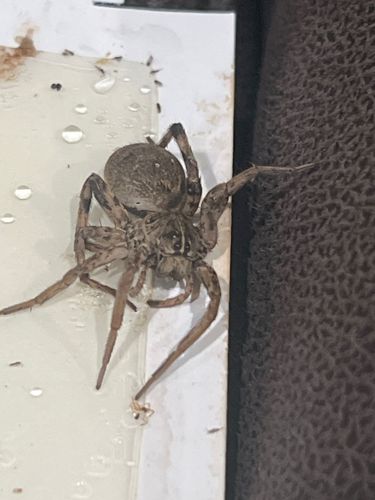Wolf Spider
Scientific Name: Lycosidae (Family)
Order & Family: Araneae (Order), Lycosidae (Family)
Size: Body length typically ranges from 0.4 to 1.4 inches (10 to 35 mm), with leg spans often much larger.

Natural Habitat
Widely distributed; found in grasslands, forests, deserts, gardens, and sometimes indoors (basements, garages). They prefer to live on the ground among leaf litter, under rocks, or in burrows.
Diet & Feeding
Predatory; they hunt insects and other small invertebrates. They do not build webs to catch prey but actively stalk and pounce on their victims.
Behavior Patterns
Nocturnal hunters, though some species may be active during the day. Known for their excellent eyesight and speed. Females carry their egg sacs attached to their spinnerets and, after hatching, carry their young on their backs for days to weeks.
Risks & Benefits
Potential risks: Wolf spiders are generally not aggressive, but they can bite if provoked or cornered. Their venom is not considered medically significant for most humans, often resulting in mild localized pain, redness, and swelling, similar to a bee sting. Benefits: They are beneficial predators, helping to control populations of various pests like crickets, grasshoppers, and other insects in gardens and agricultural settings.
Identified on: 9/13/2025